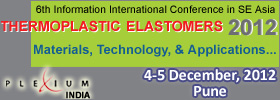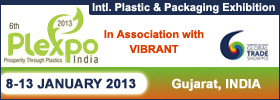
ARTICLES
The global PET market is estimated to see robust growth in the next few years. Asia Pacific is expected to maintain its lead position in terms PET demand. The growing demand for greater product protection and longer shelf life will see further growth in flexible packaging. To know about the factors affecting demand for PET, growing PET applications, factors that will help PET packaging increase its share in the packaging sector in the next decade, etc, read Driven by growth from Asia Pacific, global PET market expected to grow at a CAGR of 9.6% from 2011 to 2016
Consumption of plastic polymers in medical devices is on the rise globally. When compared to other verticals, polymers in healthcare is a low-volume market. However, it offers opportunities for higher margins and is less tied to GDP growth. Growth is impacted by reductions in healthcare costs; advancements in technological innovations; increased use of medical disposables, ageing populations, etc. On the flip side, there are some concerns about the use of polymers in medical devices, especially in terms of degradability and recyclability. To know about the factors that drive demand and impact growth, the characteristics that make polymers irreplaceable, environmental concerns, etc, read Steady rise estimated in consumption of polymers in medical devices in USA, Europe, Asia Pacific
Propylene, mainly used to manufacture polypropylene, is the second largest petrochemical by volume. A novel metabolic pathway enabling the direct conversion of renewable resources to propylene has been unveiled. However, the bio fuels industry is facing multiple aspects of the “food vs fuel” crisis, stemming from using easily converted starch, sugar and natural oils and fats resources, and/or the land and water resources needed for their production, to make bio fuels. Read more in A novel metabolic pathway enables direct conversion of renewable resources to propylene
US hospitals are increasingly scouting for innovative technology that can control hospital acquired infections, a growing issue in the country. Several new developments are seen in this direction- an antimicrobial plastics that can help manufacturers to prevent bacterial growth and enhance protection in medical devices; A new medical polymer that prevents infection and promotes bone and tissue integration-the first bioactive polymer for human implantation; A grade of HDPE intended to meet the demands typically required of large containers used in healthcare applications. Read more in Developments in high-performance plastics, antimicrobial grades for medical applications
Medical-device-associated infections can lead to systemic infections or device failure. They are caused by the formation of bacterial communities known as biofilms on the surface of devices such as urinary and venous catheters. Biofilms are less susceptible to antibiotics and the bodies' own natural defences, which make them particularly difficult to fight. Read about a significant development in materials resistant to bacterial attachment. Read more in Bacteria-resistant polymers to create coatings for surgical and hospital devices, reducing risk of infection
Graphene can show high electrical conductivity. Research is leading to several interesting developments: Graphene-polymer thin-film can be used as a replacement for transparent electrical conductors; Graphene can kill bacteria and prevent the formation of pathogenic and corrosive microorganisms, which makes it a potential candidate for antimicrobial coatings for surgical equipment; Graphene can help make a substrate-free, atomically thin circuits so thin, they could float on water or through air, but with tensile strength and top-notch electrical performance; Small amounts of electricity can be generated by flowing water over surfaces coated with graphene. Read more in Research in graphene polymers helps developments in electricals, electronics, medical

We wish to set up a plant for e plant for Fabrik bags (Alternate of Plastic Bags). Please suggest the machine and total cost of machine
We are looking to work on polyamide extrusion for fishnet. We require details about additives or chemicals to mix with PA or nylon 6 for better attributes such as increased flexibility, more UV resistance. We need help on using color dye for the nylon 6, and also the Chemical for fishnet knot strengtening.
How can we convert PLA (polylactic acid) powder form to Transparent Beads form of PLA ?
We plan to set up a small scale LDPE Carry Bag making unit/ Disposable Plastic Cups unit. Kindly suggest machinery and suppliers.
We are looking to work on polyamide extrusion for fishnet. We require details about additives or chemicals to mix with PA or nylon 6 for better attributes such as increased flexibility, more UV resistance. We need help on using color dye for the nylon 6, and also the Chemical for fishnet knot strengtening.
How can we convert PLA (polylactic acid) powder form to Transparent Beads form of PLA ?
We plan to set up a small scale LDPE Carry Bag making unit/ Disposable Plastic Cups unit. Kindly suggest machinery and suppliers.



















